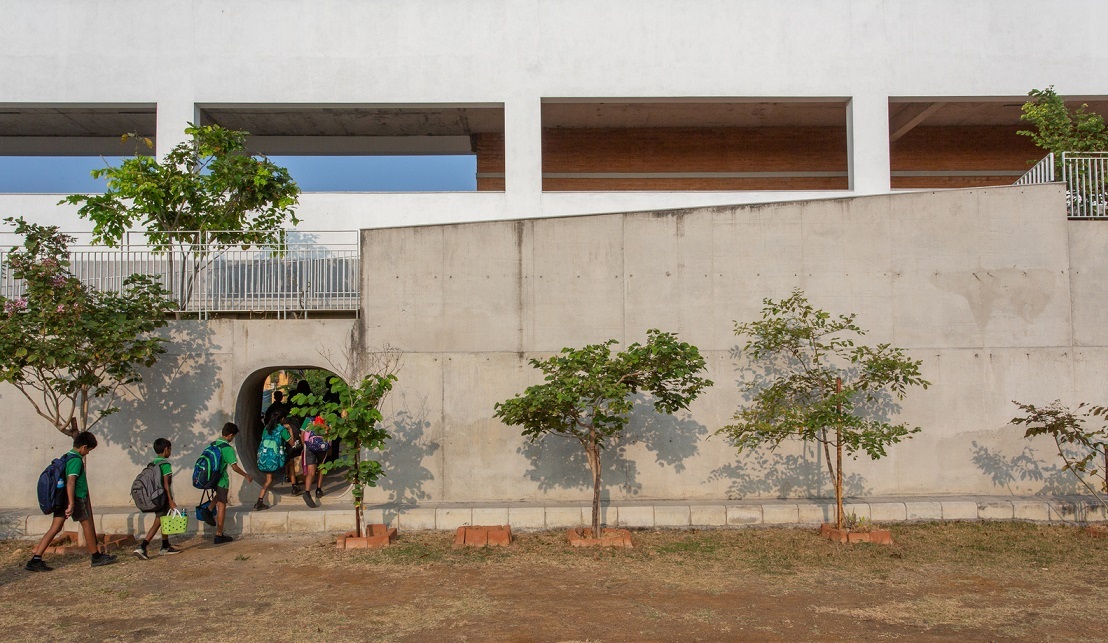Educational spaces: why inspirational design is vital
We all know that the built environment can have a powerful impact on how we think, feel and behave. When it comes to architecture for educational buildings, inspirational design is arguably even more important because of its ability to shape the learning experience of the students who inhabit it.
After all, educational institutions are the places in which the minds of our future generations will be shaped. The citizens of tomorrow will be influenced, at least in part, by the environments they inhabit as they are growing up. And so the design of school buildings needs to be carefully thought out to maximise the possibilities of collaboration and creativity.
Here, we look at the importance of educational design and explore some architectural examples that are leading the way in terms of inspiration and innovation.

PRIORITISING INSPIRATIONAL DESIGN
In the realm of educational architecture, it is vital that every aspect of the design is carefully though through and considered. Whereas in the past, students may have been expected to passively absorb information, the focus now is on interactive learning, collaboration and creativity. Because of this, learning spaces are now being specifically designed to encourage inspiration and to promote positive interactions between students and their teachers.
The use of effective design in school buildings has been shown to improve pupil outcomes and increase wellbeing among students and staff alike.
"More than 9 in 10 teachers believe school design is important, particularly for providing an effective learning environment (93%), student educational outcomes (81%) or reducing bullying (65%)." – Royal Institute of British Architects' 'Better Spaces For Learning' Report, 2016
In addition, architects now have to consider the technological requirements of a 21st Century education system. Increasingly, they have to consider how to incorporate IT requirements into their designs along with the fundamental elements of good lighting, adequate acoustics, thermal comfort and visual interest.
A SPACE IN WHICH MINDS CAN BE SET FREE
With younger children, the importance of play in the context of learning can never be underestimated. At The Green School Kindergarten in Bali, an innovative building allows pupils to move freely around a series of play stations made from bamboo.

Created by IBUKU, a design collective specialising in sustainable buildings, the kindergarten has no walls and is supported by a central column which acts as a skylight. The bamboo roof can be raised and lowered as required, and the space is always flooded with natural light, encouraging the children to play and interact freely.
This simple, but highly effective, design encourages creativity, self-expression and the pure delight of play.
"The thing about Green School, especially in Kindergarten, is that you don't often have all the students sitting in rows looking at the teacher. So to have a tower in the middle, and having a circular space, it really works. This classic, simple space still inspires us.' – Elora Hardy, Founder & Creative Director of IBUKU
REFLECTING THE NATURAL WORLD
Askshar Abol International School in Chennai, India, is another example of innovative architecture in the education sector. Putting pupils at the heart of the design, the impressive, three-storey structure provides a series of connected learning spaces allowing different age groups of children to interact.
As well as giving careful consideration to function, KSM Architecture also set out to create a sustainable and climate-friendly building. Situated in a hot and humid region of south east India, the school has been designed to allow ambient wind flow to ventilate the building.
In addition, the structure has been clad in cement-stabilised earth blocks (CSEBs) which reduce heat gain thanks to their thermal insulation properties. Waffle-style screens were also added to help reduce glare at the windows and to bring interesting visual contrast.

In summary, careful thought and consideration is key to the design of educational spaces to ensure that students can fully maximise their opportunities for learning and development.
